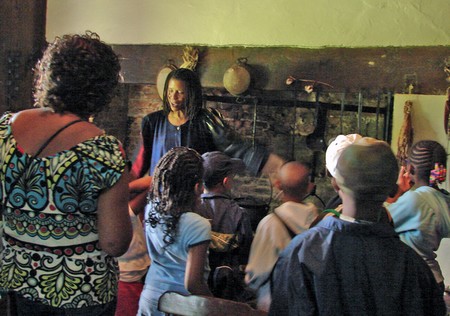The African-American Experience at Poplar Hill in the 18th & 19th Century
"A Clear Path" was a special project funded by Prince George’s Heritage, Inc. The project tasks included developing a special walking tour and brochure that highlights the experiences of African Americans who worked on the plantation both prior to and immediately after emancipation. The surviving out buildings and interior features of the historic house trace the "footprints" of the African Americans that lived on the estate.
Click this link to view the Walking Tour Brochure.
"Breaking the Chains" was another project supported through a grant from Prince George’s Heritage, Inc. This project was created as a result of the observance of the 200th anniversary of the Abolition of the British Slave Trade.
?
A narrow path leads to the beginning of the site of the former slave quarters, which no longe exist.
This original 19th century brick infirmary would have served as a "hospital" or place where the medical needs of the African-American population would have been treated.
Lewis Brown, a former slave who remained on the plantation after emancipation, worked as a gardener at Poplar Hill. We don’t know much about his life, but on July 28th, 1914, it was his words that described the life and times at this plantation in an article for the Washington Times Newspaper.
The history of "Colored School No.1" founded by many of the African-American families from Poplar Hill.


